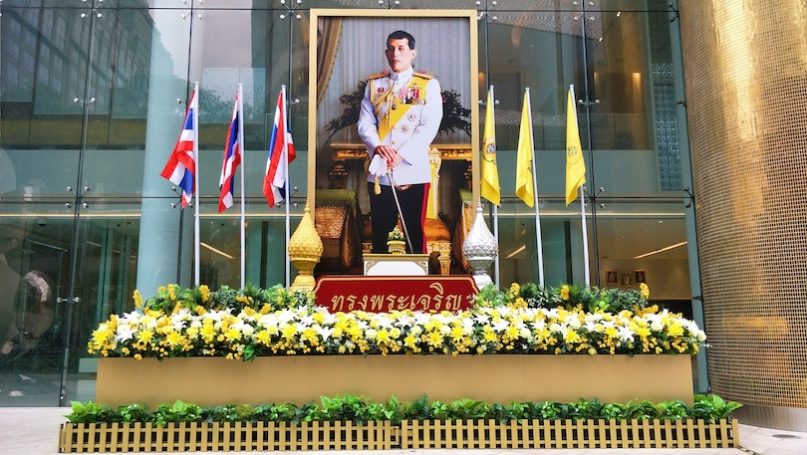
It is a conventional wisdom that monarchy has become an anomaly. In the case of Southeast Asia, this axiom is valid only up to a point. Despite the institutional upheavals, caused by colonialism and its dismantling, the region contains one ruling monarchy (Brunei), and three varieties of constitutional monarchy (Cambodia, Malaysia and Thailand) of some political import. Whether the anomaly of monarchies surviving is due to the persistent and natural workings of traditional political values, or whether their existence, besides being partly fortuitous, is now manipulated by elites (even by monarchs themselves), in order to pre-empt the destructive or destabilising effects of modernisation – the very modernisation which seems to make the survival of the monarchy rather unpredictable. The purpose of this short article is not to treat the subject as an anomaly, but to provide some pointers to the survival of monarchies in Southeast Asia under the new political climate.
It is not just modernisation that has contested the political relevance of the monarchies, democratisation has posed a threat to their existence too. In the age of democratic consciousness, a question emerges: is monarchy compatible with democracy? So far, some monarchies have successfully entrenched their rule against the tide of democracy. Some are potentially becoming the target of annihilation. For example, the youth-led protests in Thailand in 2020 called for immediate royal reforms. Protesters risked violating the draconian lèse-majesté law which forbids critical discussions on the monarchy. This was the first time in the Thai history in which the monarchy has been made a public agenda. Talks on republicanism in Thailand have remained a taboo. Yet they are proliferating.
I argue that the future of monarchies in Southeast Asia depends on the combination of their personal and political capabilities and how they transpire as a non-threatening factor to democracy, at three levels: personal, national and international.
At a personal level, the monarchs, more than ever, need to exhibit their increased accountability, transparency and responsibility, if they want to live side-by-side with a democratic regime. On mainland Southeast Asia, the concept of divine kingship has remained highly sacred. The Thai and Cambodian kings are supposed to perform as Buddhist Dhammarajas, or virtual kings, so as to augment their charisma, and subsequently reverence, from their subordinates. Much in the same vein, the Sultans must show that they exercise their royal authority based on Islam. The religious sanctity of the throne is indispensable for the existence of the monarchies. It demonstrates the close intertwining between kingship and religion, and if used wisely, it can enhance further the level of divinity of the monarchs. The collapse of Nepalese monarchy was partly caused by the king’s fading faith in religion.
At a national level, the monarchy’s position is intricately related to its role as guardian of democracy. The monarchies, in the democratic world, are obliged to play a crucial part in supporting democratic constitutionalism, as seen in the case of Britain. They may serve as an important symbol of national unity and harmony, particularly in deeply divided societies. In transitional societies, they may assist in bridging past with present to ensure political stability by supporting democratisation and rule of law. In time of crisis, from war, political violence, terrorist attack to natural disaster, monarchs may help the country mourn and heal as part of restoring peace and normalcy. The Japanese Emperor provided an example as a national healer by visiting those affected by tsunamis and earthquakes in the past. Monarchs may be expected to give advice to the head of executive power and perform an essential check on the power of elected legislators.
Lastly, at the international level, the monarchies may need to ensure that their existence is in the interests of powerful foreign allies, and that they remain an essential political institution. The United States was known to be a guarantee of security of the Thai monarch during the spread of the communist threat in the region. Foreign recognition of monarchies is important for their survival.
All these guides to longevity of monarchies in Southeast Asia do not automatically offer a rosy picture for their future. New factors emerge from time to time to challenge the integrity and legitimacy of their rule. Using illegitimate weapons to manage such challenges may prove counterproductive. They do not necessarily display the monarchs’ ultimate power, but rather their desperation, and insecurity, to cling on to it.
The monarchical system has been around for thousands of years. It has become less forceful, and in some cases has ceased to exist, as nations of the world have accepted democracy as the final form of government. The key to the survival of the monarchical institution, therefore, rests on the way in which it acts and reacts in a complementary manner to the rising desire of the people for democracy.
Further Reading on E-International Relations
- Opinion – Southeast Asia: Global Rock Star in Waiting
- China and Japan’s Connectivity Strategies in Southeast Asia: Thailand’s Case
- Human Rights and Democracy Amidst Militarized COVID-19 Responses in Southeast Asia
- Japan’s Role in Shaping the Security Landscape of Southeast and East Asia
- ASEAN ‘Cohesiveness and Responsiveness’ and Peace and Stability in Southeast Asia
- The ‘China Factor’ in India’s Maritime Engagement with Southeast Asia